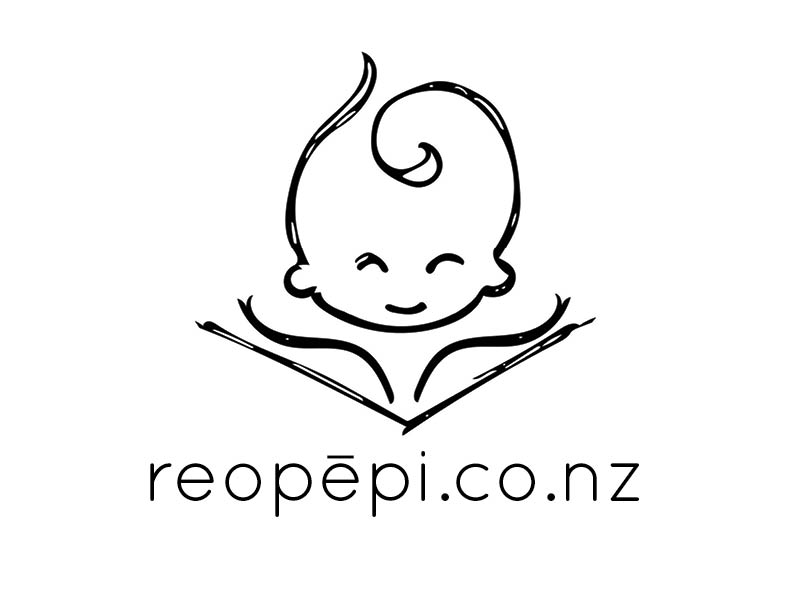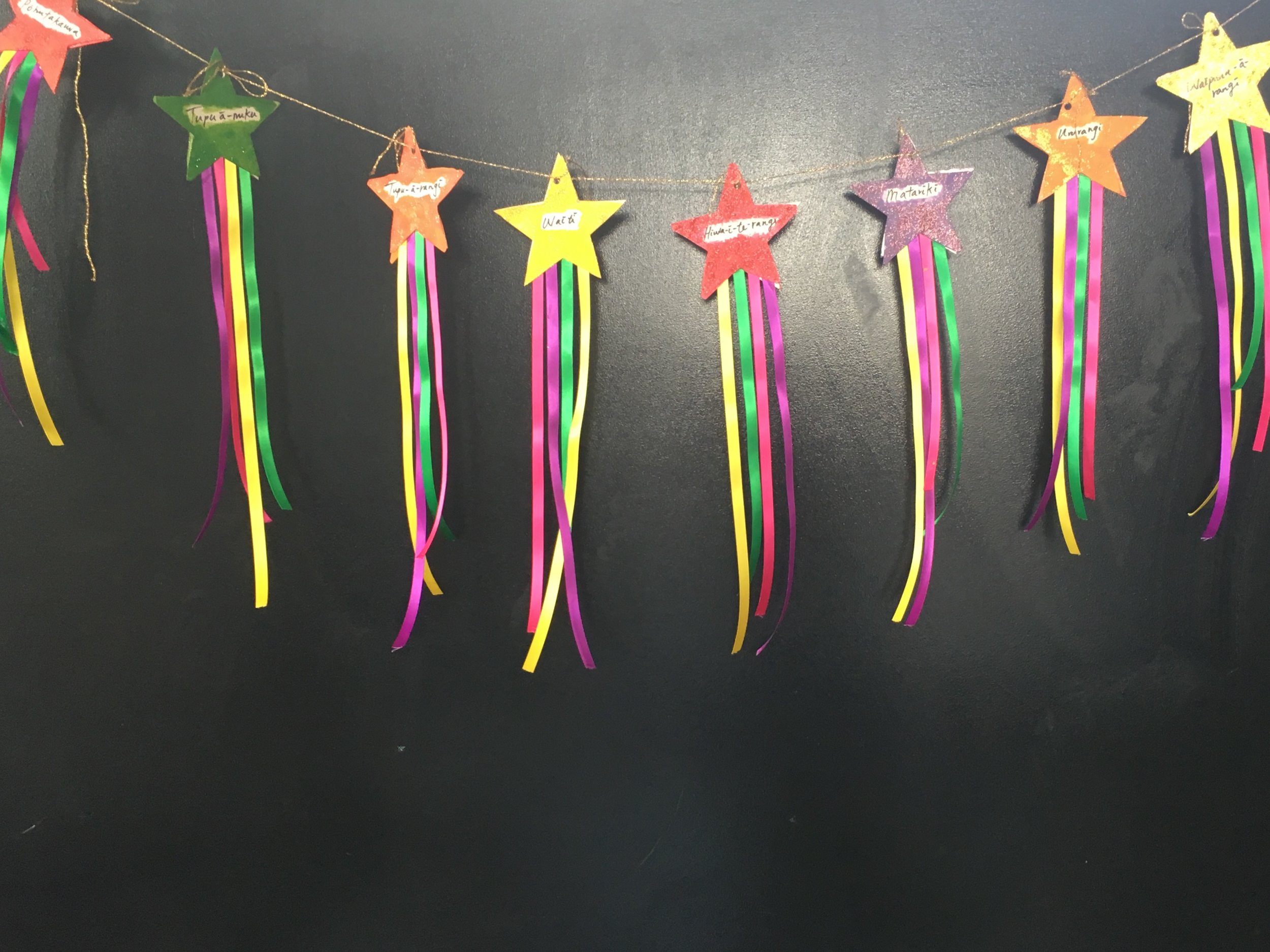Maiea mai ana a Matariki!
Ngā mihi ō te tau hau! In the Northern hemisphere they celebrate Christmas and New Year in the depths of winter. In Aotearoa we have a wonderful reason to mark mid-winter-Matariki. We see so many ECE centres, playcentres, kura and kōhanga making the most of Matariki and the opportunities for learning. Here we share some answers to pātai about Matariki based on our own recent learning. We hope to encourage you to celebrate our unique NZ culture in your own way this (new) year. Scroll right to the bottom for some Reo Pēpi Matariki ideas.
What is Matariki?
Matariki is a cluster of stars traditionally associated with and celebrated as the dawning of the new year by Māori.
Why do we celebrate Matariki?
The first and foremost purpose of celebrating Matariki is to acknowledge tīpuna. The mauri and the wairua of those gone from this world before us, both in the year past and their ancestors too, right back to the beginnings of whakapapa. So whatever our plans for Matariki we should remain mindful of this and keep aroha in our hearts.
How was Matariki traditionally observed?
Traditionally a sacrificial feast would be ritually prepared in a special oven. Selected food symbolically charged and corresponding to the stars would be included. On the night Matariki rose in the sky the names of the e ngā mate-the years dead would be chanted through the night, memories of them reviewed, as they symbolically released to the eternal cosmos. When the the steam rose from the cooking process it acted both as a cleansing process for the years concerns while also carrying hopes and aspirations for the coming year to the heavens.
How was Matariki tradionally celebrated?
Matariki rose at a time when the hunting, gathering and harvesting of food was completed for the season. Then people had time for remembering, reflection and celebration during Matariki. Festivities were held which included kai, waiata and haka. The timing allowed people pause to enjoy pleasurable pastimes including games, arts, stories and connection to the natural world.
How is Matariki celebrated now?
Since the 1990’s New Zealanders have been reviving the ancient practice of celebrating Matariki in many and varied ways. Celebrations with food, singing and dancing. Activities that bring people together, to observe the stars and the Winter night sky. Creative fun, such as making kites or lanterns, storytelling, music and arts. The SKY is really the limit in planning for marking Matariki-an ancient tradition that feels wonderfully unique in modern times.
How do we know when Matariki is?
Matariki is part of beautiful alternative way of understanding time. Matariki is part of a uniquely Māori system that utilises the Lunar calendar, the movement of the sun as it rises and sets and the stars as they appear and fade from visibility. In modern times we mostly observe the Solar calendar to tell us what day/week/month it is. However this is a limited understanding of time, the solar or gregorian calendar attempts to tell us time and we strive to meet its demands. Taking a wider view of the markers of time available to us in nature provides us with more information. Additionally when understanding time in this way we are invited to consider the ‘right time’ for certain activities based on nature and the natural flow of time.
Calendars and resources are now available to help us consider the time we follow from a wider viewpoint than the traditional gregorian calendar. Thinking about time with a range of understandings is a powerful way to decolonise ones mind and life!
Heoi anō-Usually Matariki is visible in the winter night sky in Aotearoa from mid-late June onwards. Dr. Rangi Matamua (author of Matariki-Star of the year) as well as other tōhunga kokorangi (traditional astronomers) can point us in the right direction for timing our celebrations well, keep an ear out closer to the time each year to make sure you are under the right stars.
How can we find the Matariki stars
From mid-late June, just before sunrise, look to the north-east horizon. Find the constellation Tautoru, sometimes called ‘The Pot’ or ‘Orion’s Belt’. Trace a line northwards from the three stars of Tautoru. Look for a faint sparkle of tiny dots, about the same width as Tautoru is long. This is the Matariki star cluster. It is easier to see the Matariki star cluster in the very early hours of the morning before dawn.
Tīramarama ngā whetū, Ngā tuāhine e iwa, Tiramarama Matariki ē, Ka kitea i te moata ē, Hei whakanui i te Tau Hou, O te iwi Māori e Matariki ē !
The bright shining stars, The nine sisters, Shining bright for Matariki, You’ll see them early morning, Celebrating the Māori New Year, It is Matariki e!
Te iwa o Matariki
With the exciting resurgance of Matariki being celebrated, new information is coming our way to help us better prepare and observe Te tau hou Māori-the Māori new year. One of the major new things to (re)learn has been the revelation that there are actually 9 whetū (stars)-not seven, in the constellation of Matariki.
Each of te iwa o Matariki-the stars of Matariki have a name and a special role in our world and our lives. Mai rā anō, long ago our tipuna would light a sacred fire and everyone would sit around it-they would think about the Matariki stars and how each one was different and related to them. While they thought they would make wishes and set intentions for the new year to come. The smoke of the fire would carry their aspirations up to the stars.
We decided to look more closely at the stars for our whānau learning. We have been crafting with the tamariki and dreaming up new ways to teach them about Matariki.
Tupuārangi-Is for te ngahere, our native forests and all the native creatures that live there, Te manu-the birds, Te mokomoko-lizards and ngārara-all our bugs!
Waipunarangi-is for the waters of the sky in all their forms- ua (rain) ua nganga (hail) and hukarere (snow)!
Ururangi is close friends with te whānau puhi (the wind family) – including Hauraro (the north wind), Tonga (the south wind), Hauāuru (the west wind), and Marangai (the east wind).
Hiwai-i-te-rangi is the wishing star, who helps us to recognise our hopes, dreams and aspirations for the coming year.
Matariki loves to gather the people together, and to connect them.
Tupuānuku- Understands the importance of healthy soil. Tupuānuku encourages us to consider more carefully what we are putting into Papatūānuku (the earth) so that we may always grow healthy and strong.
Waitā is for our vast oceans, Te Moana-nui-o-Kiwa (the Pacific Ocean) and Te Tai-o-Rehua (the Tasman Sea). Waitā encourages us to respect our coasts and oceans, and treat their inhabitants like the taonga (treasures) they really are.
Waitī watches over our freshwater environments. Our awa (rivers), roto (lakes), kūkūwai (wetlands), and waipuna (springs). As the waters flow, she sees how they support us, provide for us, connect us, and sustain us. Waitī has heard the important stories that our waters have to tell. She encourages us to listen, and to learn from them as well.
Pōhutukawa- Pōhutukawa holds tight to our memories of treasured people who have passed on. She encourages us to take time to remember them, and to acknowledge their impact on our lives.







